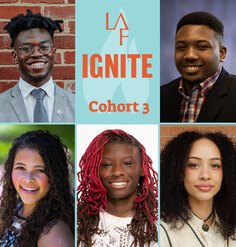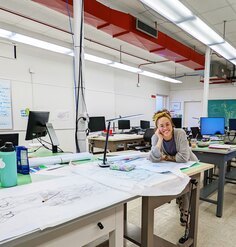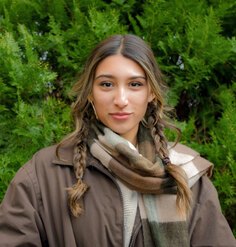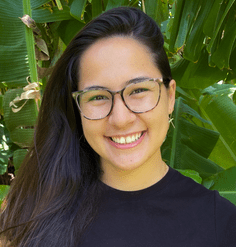Olmsted Scholar Feature: Measuring LID Performance in Utah
By Pamela Blackmore, 2013 National Olmsted Scholar Finalist
Landscape architects in the Intermountain West face unique challenges when trying to implement low-impact development (LID) strategies. LID applications are rare in these semi-arid environments, and studies analyzing LID effectiveness in these environments are even fewer.
I have been part of an interdisciplinary research team at Utah State University, currently analyzing the effectiveness of LID in Daybreak, an award-winning, master-planned community and the largest green infrastructure project in Utah. It is recognized as one of 500 U.S. new urban sites and has been featured as a Case Study Brief in the Landscape Architecture Foundation (LAF)’s Landscape Performance Series.
The landscape architecture firm Design Workshop was responsible for the design of open spaces, including the 65-acre, man-made Oquirrh Lake, stormwater canals, and 25 acres of constructed wetlands, bioswales, and infiltration basins. This integrated stormwater management system was designed to infiltrate runoff up to the 100-year storm event, reducing infrastructure costs by an estimated $70 million.
Our study objective is to analyze the effectiveness of LID strategies on stormwater quality in Utah’s unique environment and climate. Two sub-watersheds within Daybreak were compared, each with different stormwater management strategies. One watershed focuses on LID designs, such as using a bioswale to detain and filter runoff. The other watershed largely follows traditional stormwater management methods. As the lead research assistant of this study, I am helping analyze key contaminants that are associated with urban development, including heavy metals, total suspended solids (TSS), nitrogen, and phosphorus.
Preliminary results show the effectiveness of the LID strategies in Utah, particularly when comparing first flush samples. It is evident that there are huge reductions in these pollutants as a result of the LID designs.
Daybreak’s integrated stormwater system has already provided salient environmental and economic benefits. Our current study further demonstrates performance of the LID applications, and the data can inform future designs. The research team will present project findings at the 2013 American Water Resources Association conference to international, multidisciplinary audiences. Our communication of successful LID projects such as Daybreak is expected to further promote sustainable design and demonstrate the benefits of high performing landscapes.
Pamela graduated from Utah State University (USU) with a BLA in 2013 with Departmental Honors. She has worked as a LAF Case Study Investigation (CSI) Research Assistant for two summers on eight case studies, participated in Dr. Bo Yang’s Daybreak stormwater quality study, and continues to research and write articles with Dr. Yang. She received USU’s 2013 Honor’s Thesis Award, Faculty Medal and Laval Morris Travel Fellowship. She is currently working as an intern in Design Workshop’s Salt Lake City office.











